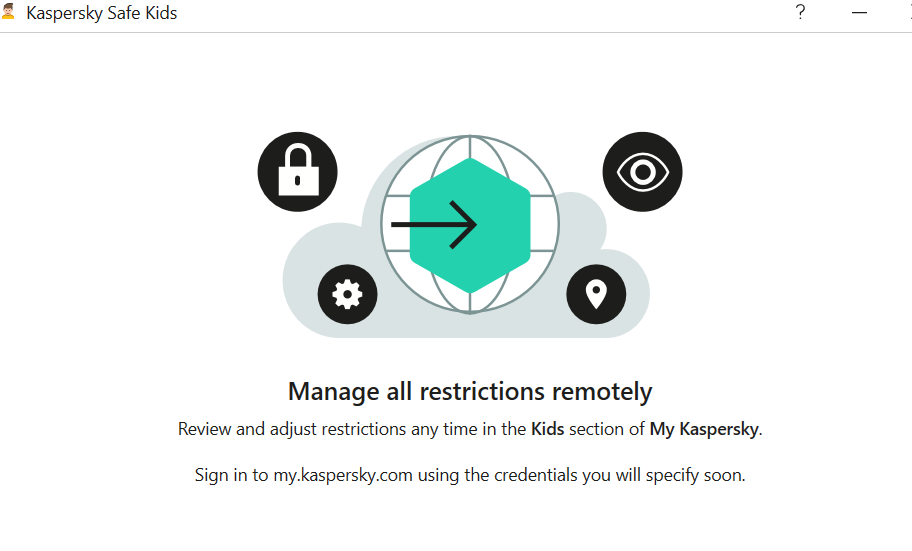#FactCheck - Misleading Video Allegedly Depicting Trampling of Indian Tri-colour in Kerala or Tamil Nadu Circulates on Social Media
Executive Summary:
The video that allegedly showed cars running into an Indian flag while Pakistan flags flying in the air in Indian states, went viral on social media but it has been established to be misleading. The video posted is neither from Kerala nor Tamil Nadu as claimed, instead from Karachi, Pakistan. There are specific details like the shop's name, Pakistani flags, car’s number plate, geolocation analyses that locate where the video comes from. The false information underscores the importance of verifying information before sharing it.


Claims:
A video circulating on social media shows cars trampling the Indian Tricolour painted on a road, as Pakistani flags are raised in pride, with the incident allegedly taking place in Tamil Nadu or Kerala.


Fact Check:
Upon receiving the post we closely watched the video, and found several signs that indicated the video was from Pakistan but not from any place in India.
We divided the video into keyframes and found a shop name near the road.
We enhanced the image quality to see the shop name clearly.


We can see that it’s written as ‘Sanam’, also we can see Pakistan flags waving on the road. Taking a cue from this we did some keyword searches with the shop name. We found some shops with the name and one of the shop's name ‘Sanam Boutique’ located in Karachi, Pakistan, was found to be similar when analyzed using geospatial Techniques.



We also found a similar structure of the building while geolocating the place with the viral video.


Additional confirmation of the place is the car’s number plate found in the keyframes of the video.

We found a website that shows the details of the number Plate in Karachi, Pakistan.

Upon thorough investigation, it was found that the location in the viral video is from Karachi, Pakistan, but not from Kerala or Tamil Nadu as claimed by different users in Social Media. Hence, the claim made is false and misleading.
Conclusion:
The video circulating on social media, claiming to show cars trampling the Indian Tricolour on a road while Pakistani flags are waved, does not depict an incident in Kerala or Tamil Nadu as claimed. By fact-checking methodologies, it has been confirmed now that the location in the video is actually from Karachi, Pakistan. The misrepresentation shows the importance of verifying the source of any information before sharing it on social media to prevent the spread of false narratives.
- Claim: A video shows cars trampling the Indian Tricolour painted on a road, as Pakistani flags are raised in pride, taking place in Tamil Nadu or Kerala.
- Claimed on: X (Formerly known as Twitter)
- Fact Check: Fake & Misleading
Related Blogs

Introduction:
The Ministry of Civil Aviation, GOI, established the initiative ‘DigiYatra’ to ensure hassle-free and health-risk-free journeys for travellers/passengers. The initiative uses a single token of face biometrics to digitally validate identity, travel, and health along with any other data needed to enable air travel.
Cybersecurity is a top priority for the DigiYatra platform administrators, with measures implemented to mitigate risks of data loss, theft, or leakage. With over 6.5 million users, DigiYatra is an important step forward for India, in the direction of secure digital travel with seamless integration of proactive cybersecurity protocols. This blog focuses on examining the development, challenges and implications that stand in the way of securing digital travel.
What is DigiYatra? A Quick Overview
DigiYatra is a flagship initiative by the Government of India to enable paperless travel, reducing identity checks for a seamless airport experience. This technology allows the entry of passengers to be automatically processed based on a facial recognition system at all the checkpoints at the airports, including main entry, security check areas, aircraft boarding, and more.
This technology makes the boarding process quick and seamless as each passenger needs less than three seconds to pass through every touchpoint. Passengers’ faces essentially serve as their documents (ID proof and if required, Vaccine Proof) and their boarding passes.
DigiYatra has also enhanced airport security as passenger data is validated by the Airlines Departure Control System. It allows only the designated passengers to enter the terminal. Additionally, the entire DigiYatra Process is non-intrusive and automatic. In improving long-standing security and operational airport protocols, the platform has also significantly improved efficiency and output for all airport professionals, from CISF personnel to airline staff members.
Policy Origins and Framework
Rooted in the Government of India's Digital India campaign and enabled by the National Civil Aviation Policy (NCAP) 2016, DigiYatra aims to modernise air travel by integrating Aadhaar-based passenger identification. While Aadhaar is currently the primary ID, efforts are underway to include other identification methods. The platform, supported by stakeholders like the Airports Authority of India (26%) and private airports (14.8% each), must navigate stringent cybersecurity demands. Compliance with the Digital Personal Data Protection Act, 2023, ensures the secure use of sensitive facial recognition data, while the Aircraft (Security) Rules, 2023, mandate robust interoperability and data protection mechanisms across stakeholders. DigiYatra also aspires to democratise digital travel, extending its reach to underserved airports and non-tech-savvy travellers. As India refines its cybersecurity and privacy frameworks, learning from global best practices is essential to safeguarding data and ensuring seamless, secure air travel operations.
International Practices
Global practices offer crucial lessons to strengthen DigiYatra's cybersecurity and streamline the seamless travel experience. Initiatives such as CLEAR in the USA and Seamless Traveller initiatives in Singapore offer actionable insights into further expanding the system to its full potential. CLEAR is operational in 58 airports and has more than 17 million users. Singapore has made Seamless Traveller active since the beginning of 2024 and aims to have a 95% shift to automated lanes by 2026.
Some additional measures that India can adopt from international initiatives are regular audits and updates to the cybersecurity policies. Further, India can aim for a cross-border policy for international travel. By implementing these recommendations, DigiYatra can not only improve data security and operational efficiency but also establish India as a leader in global aviation security standards, ensuring trust and reliability for millions of travellers
CyberPeace Recommendations
Some recommendations for further improving upon our efforts for seamless and secure digital travel are:
- Strengthen the legislation on biometric data usage and storage.
- Collaborate with global aviation bodies to develop standardised operations.
- Cybersecurity technologies, such as blockchain for immutable data records, should be adopted alongside encryption standards, data minimisation practices, and anonymisation techniques.
- A cybersecurity-first culture across aviation stakeholders.
Conclusion
DigiYatra represents a transformative step in modernising India’s aviation sector by combining seamless travel with robust cybersecurity. Leveraging facial recognition and secure data validation enhances efficiency while complying with the Digital Personal Data Protection Act, 2023, and Aircraft (Security) Rules, 2023.
DigiYatra must address challenges like secure biometric data storage, adopt advanced technologies like blockchain, and foster a cybersecurity-first culture to reach its full potential. Expanding to underserved regions and aligning with global best practices will further solidify its impact. With continuous innovation and vigilance, DigiYatra can position India as a global leader in secure, digital travel.
References
- https://government.economictimes.indiatimes.com/news/governance/digi-yatra-operates-on-principle-of-privacy-by-design-brings-convenience-security-ceo-digi-yatra-foundation/114926799
- https://www.livemint.com/news/india/explained-what-is-digiyatra-how-it-will-work-and-other-questions-answered-11660701094885.html
- https://www.civilaviation.gov.in/sites/default/files/2023-09/ASR%20Notification_published%20in%20Gazette.pdf

Introduction
Public infrastructure has traditionally served as the framework for civilisation, transporting people, money, and ideas across time and space, from the iron veins of transcontinental railroads to the unseen arteries of the internet. In democracies where free markets and public infrastructure co-exist, this framework has not only facilitated but also accelerated progress. Digital Public Infrastructure (DPI), which powers inclusiveness, fosters innovation, and changes citizens from passive recipients to active participants in the digital age, is emerging as the new civic backbone as we move away from highways and towards high-speed data.
DPI makes it possible for innovation at the margins and for inclusion at scale by providing open-source, interoperable platforms for identities, payments, and data exchange. Examples of how the Global South is evolving from a passive consumer of technology to a creator of globally replicable governance models are India’s Aadhaar (digital identification), UPI (real-time payments), and DigiLocker (data empowerment). As the ‘digital commons’ emerges, DPI does more than simply link users; it also empowers citizens, eliminates inefficiencies from the past, and reimagines the creation and distribution of public value in the digital era.
Securing the Digital Infrastructure: A Contemporary Imperative
As humans, we are already the inhabitants of the future, we stand at the temporal threshold for reform. Digital Infrastructure is no longer just a public good. It’s now a strategic asset, akin to oil pipelines in the 20th century. India is recognised globally for the introduction of “India Stack”, through which the face of digital payments has also been changed. The economic value contributed by DPIs to India’s GDP is predicted to reach 2.9-4.2 percent by 2030, having already reached 0.9% in 2022. Its role in India’s economic development is partly responsible for its success; among emerging market economies, it helped propel India to the top of the revenue administrations’ digitalisation index. The other portion has to do with how India’s social service delivery has changed across the board. By enabling digital and financial inclusion, it has increased access to education (DIKSHA) and is presently being developed to offer agricultural (VISTAAR) and digital health (ABDM) services.
Securing the Foundations: Emerging Threats to Digital Public Infrastructure
The rising prominence of DPI is not without its risks, as adversarial forces are developing with comparable sophistication. The core underpinnings of public digital systems are the target of a new generation of cyber threats, ranging from hostile state actors to cybercriminal syndicates. The threats pose a great risk to the consistent development endeavours of the government. To elucidate, targeted attacks on Biometric databases, AI-based Misinformation and Psychological Warfare, Payment System Hacks, State-sponsored malware, cross-border phishing campaigns, surveillance spyware and Sovereign Malware are modern-day examples of cyber threats.
To secure DPI, a radical rethink beyond encryption methods and perimeter firewalls is needed. It requires an understanding of cybersecurity that is systemic, ethical, and geopolitical. Democracy, inclusivity, and national integrity are all at risk from DPI. To preserve the confidence and promise of digital public infrastructure, policy frameworks must change from fragmented responses to coordinated, proactive and people-centred cyber defence policies.
CyberPeace Recommendations
Powering Progress, Ignoring Protection: A Precarious Path
The Indian government is aware that cyberattacks are becoming more frequent and sophisticated in the nation. To address the nation’s cybersecurity issues, the government has implemented a number of legislative, technical, and administrative policy initiatives. While the initiatives are commendable, there are a few Non-Negotiables that need to be in place for effective protection:
- DPIs must be declared Critical Information Infrastructure. In accordance with the IT Act, 2000, the DPI (Aadhaar, UPI, DigiLocker, Account Aggregator, CoWIN, and ONDC) must be designated as Critical Information Infrastructure (CII) and be supervised by the NCIIPC, just like the banking, energy, and telecom industries. Give NCIIPC the authority to publish required security guidelines, carry out audits, and enforce adherence to the DPI stack, including incident response protocols tailored to each DPI.
- To solidify security, data sovereignty, and cyber responsibility, India should spearhead global efforts to create a Global DPI Cyber Compact through the “One Future Alliance” and the G20. To ensure interoperable cybersecurity frameworks for international DPI projects, promote open standards, cross-border collaboration on threat intelligence, and uniform incident reporting guidelines.
- Establish a DPI Threat Index to monitor vulnerabilities, including phishing attacks, efforts at biometric breaches, sovereign malware footprints, spikes in AI misinformation, and patterns in payment fraud. Create daily or weekly risk dashboards by integrating data from state CERTs, RBI, UIDAI, CERT-In, and NPCI. Use machine learning (ML) driven detection systems.
- Make explainability audits necessary for AI/ML systems used throughout DPI to make sure that the decision-making process is open, impartial, and subject to scrutiny (e.g., welfare algorithms, credit scoring). Use the recently established IndiaAI Safety Institute in line with India’s AI mission to conduct AI audits, establish explanatory standards, and create sector-specific compliance guidelines.
References
- https://orfamerica.org/newresearch/dpi-catalyst-private-sector-innovation?utm_source=chatgpt.com
- https://www.institutmontaigne.org/en/expressions/indias-digital-public-infrastructure-success-story-world
- https://www.pib.gov.in/PressReleasePage.aspx?PRID=2116341
- https://www.pib.gov.in/PressReleaseIframePage.aspx?PRID=2033389
- https://www.governancenow.com/news/regular-story/dpi-must-ensure-data-privacy-cyber-security-citizenfirst-approach

Today, let us talk about one of the key features of our digital lives – security. The safer their online habits are, the safer their data and devices will be. A branded security will make their devices and Internet connections secure, but their carelessness or ignorance can make them targets for cybercrimes. On the other hand, they can themselves unwittingly get involved in dubious activities online. With children being very smart about passwords and browsing history clearing, parents are often left in the dark about their digital lives.
Fret not, parental controls are there at your service. These are digital tools often included with your OS or security software package, which helps you to remotely monitor and control your child’s online activities.
Where Can I find them?
Many devices come with pre-installed PC tools that you have to set up and run. Go to Settings-> Parental controls or Screentime and proceed from there. As I mentioned, they are also offered as a part of your comprehensive security software package.
Why and How to Use Parental Controls
Parental controls help monitor and limit your children's smartphone usage, ensuring they access only age-appropriate content. If your child is a minor, use of this tool is recommended, with the full knowledge of your child/ren. Let them know that just as you supervise them in public places for their safety, and guide them on rights and wrongs, you will use the tool to monitor and mentor them online, for their safety. Emphasize that you love them and trust them but are concerned about the various dubious and fake characters online as well as unsafe websites and only intend to supervise them. As they grow older and display greater responsibility and maturity levels, you may slowly reduce the levels of monitoring. This will help build a relationship of mutual trust and respect.
Step 1: Enable Parental Controls
- iOS: If your child has an iPhone, to set up the controls, go to Settings, select Screen Time, then select Content & Privacy Restrictions.
- Android: If the child has an Android phone, you can use the Google Family Link to manage apps, set screen time limits, and track device usage.
- Third-party apps: Consider security tools like McAfee, Kaspersky, Bark, Qustodio, or Norton Family for advanced features.
Check out what some of the security software apps have on offer:






If you prefer Norton, here are the details:

McAfee Parental Controls suite offers the following features:

McAfee also outlines why Parental Controls matter:

Lastly, let us take a look at what Quick Heal has on offer:

STEP 2: Set up Admin Login
Needless to say, a parent should be the admin login, and it is a wise idea to set up a strong and unique password. You do not want your kids to outsmart you and change their accessibility settings, do you? Remember to create a password you will remember, for children are clever and will soon discover where you have jotted it down.
STEP 3: Create Individual accounts for all users of the device
Let us say two minor kids, a grandparent and you, will be using the device. You will have to create separate accounts for each user. You can allow the children to choose their own passwords, it will give them a sense of privacy. The children or you may (or may not) need to help any Seniors set up their accounts.
Done? Good. Now let us proceed to the next step.
STEP 4: Set up access permissions by age
Let us first get grandparents and other seniors out of the way by giving them full access. when you enter their ages; your device will identify them as adults and guide you accordingly.
Now for each child, follow the instructions to set up filters and blocks. This will again vary with age – more filters for the younger ones, while you can remove controls gradually as they grow older, and hence more mature and responsible. Set up screen Time (daily and weekends), game filtering and playtime, content filtering and blocking by words (e.g. block websites that contain violence/sex/abuse). Ask for activity reports on your device so that you can monitor them remotely This will help you to receive alerts if children connect with strangers or get involved in abusive actions.
Save the data and it has done! Simple, wasn’t it?
Additional Security
For further security, you may want to set up parental controls on the Home Wi-Fi Router, Gaming devices, and online streaming services you subscribe to.
Follow the same steps. Select settings, Admin sign-in, and find out what controls or screen time protection they offer. Choose the ones you wish to activate, especially for the time when adults are not at home.
Conclusion
Congratulations. You have successfully secured your child’s digital space and sanitized it. Discuss unsafe practices as a family, and make any digital rule breaches and irresponsible actions, or concerns, learning points for them. Let their takeaway be that parents will monitor and mentor them, but they too have to take ownership of their actions.


